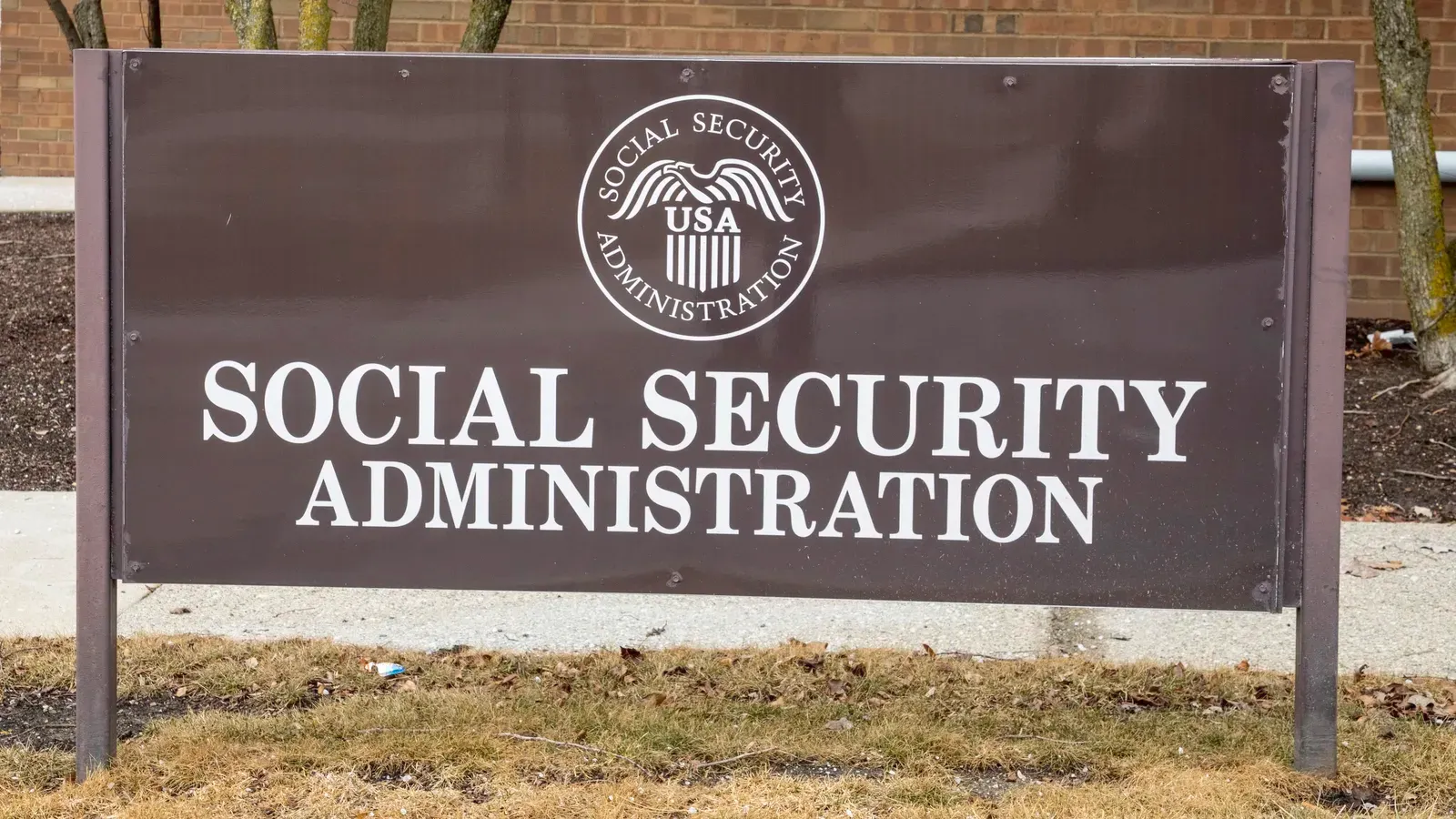Social Security Changes in 2025: Impact of Phone Claims, In-Person Filing, and Accessibility on Vulnerable Populations
Introduction Social Security Changes in 2025

In 2025, Social Security policy changes are dramatically influencing how millions of Americans file for benefits. With a clear pivot toward improved fraud prevention and efficiency, recent reforms have altered traditional processes such as phone claims and in-person filing. For many, especially the elderly, disabled, and individuals with limited mobility, these adjustments have resulted in both opportunities and serious challenges.
The ongoing modernization of the system is also intersecting with broader digital trends, and even cultural phenomena like the doge meme have become part of online conversations about change. This article provides an in-depth analysis of the latest policy changes, evaluating the pros and cons of various filing methods, the real-life impacts on vulnerable populations, and the action steps recommended for both beneficiaries and policymakers.
Overview of 2025 Social Security Policy Changes
New Filing Requirements and Appointment Systems
In early 2025, the Social Security Administration (SSA) introduced sweeping policy reforms aimed at both improving operational efficiency and thwarting fraudulent activities. One of the most notable changes is the shift toward mandatory in-person filing for a large segment of claims. Previously, claimants could often complete many interactions through the telephone or via online platforms. However, in response to rising incidents of fraudulent benefit modifications, the new policy has mandated that many changes must be processed face-to-face with an SSA representative.
The new appointment system is designed to streamline in-person visits, reducing the long wait times that were once a major concern. Yet, while the system is intended to create better-managed queues and eliminate bureaucratic delays, it also poses logistical challenges for individuals who struggle with scheduling or traveling. This shift is a double-edged sword: although it introduces increased personal interaction and scrutiny, it simultaneously raises barriers for those already facing physical or technological limitations.
Restrictions on Phone Claims
Alongside the push for in-person filing, the SSA has also curtailed services available via phone claims. Changes include the elimination of certain modifications—such as updating direct deposit information—over the telephone. Instead, these actions now require an in-person visit or must be done online. The rationale behind this move is driven by the need to reduce identity theft and fraudulent alterations, prompted by past abuses of the phone system.
For individuals who once relied on phone claims because of mobility issues or geographical isolation, this reduction in remote assistance means that adapting to an entirely new filing method is not optional—it’s a necessity. While improved security is paramount, the transition highlights the trade-off between enhanced protection and accessibility. In the context of hardship, beneficiaries now face increased hurdles if they are unable to reliably access either online services or local SSA offices.
Impacts on Vulnerable Groups
Impact on the Elderly

The aging population has long depended on familiar and accessible Social Security services. Many older Americans have traditionally used phone claims due to concerns about the physical demands of travelling to SSA offices. With the new mandates favouring in-person filing and digital processes, many are now at risk of missing out on critical benefits due to technological unfamiliarity or mobility constraints.
For example, consider an 82-year-old retiree with limited driving ability in a suburban area. Previously, phone claims offered an easy alternative to the traditional face-to-face system. Now, having to travel to an SSA office—even when appointments are scheduled—can induce significant anxiety and logistical complications. In rural regions, where SSA facilities are often sparse, the difficulty is compounded by transportation limitations. The net result is a heightened sense of insecurity and financial instability among the elderly, who already contend with rising living costs and healthcare demands.
Impact on the Disabled
The disabled community faces unique challenges that further complicate the new filing process. Many beneficiaries who rely on Social Security due to disability have entrenched routines around phone support systems that allow them to file claims from home. The reduction in phone claims services means that these individuals might now have to navigate a convoluted process that requires in-person interactions, often in environments that are not fully adapted for individuals with special needs.
One case involved a disabled veteran in California who previously managed his benefits entirely over the phone. Under the new guidelines, his claim now required physical presence, which not only proved physically draining but also sparked concerns about accessibility at the local SSA office. This situation underscores the need for accommodations such as accessible transportation, improved physical infrastructure at SSA locations, and digital support designed with disabilities in mind. The policy changes, despite their intention of tightening security, inadvertently escalate the hardship for the disabled.
Impact on Those with Limited Mobility
Individuals with limited mobility often face overlapping challenges that are not just logistical but also emotional. Facing long wait times and transportation hurdles in addition to the stress of navigating complex bureaucratic systems, these members of society risk falling through the cracks. An individual with mobility constraints who depends on a caregiver for appointments might face additional scheduling conflicts when SSA offices operate on a strict appointment-only basis.
For example, a middle-aged person with a chronic physical condition once relied on a trusted local SSA office and regular phone claims assistance. With the advent of mandatory in-person filing, the necessity to schedule far-off appointments or depend on unreliable transportation services paves the way for missed deadlines and delayed benefit disbursements. Clearly, the spotlight on the physical nature of new filing mechanisms deepens the hardship for populations already dealing with pervasive challenges.
Analysis of Filing Methods in the Modern Social Security System
Advantages and Challenges of Phone Claims
Phone claims have traditionally been considered a convenient alternative to physical visits, particularly during just-in-time updates and routine modifications. Call centres dedicated to handling phone claims allowed beneficiaries to complete necessary administrative tasks without the need to travel.
On the positive side, phone claims maintain a level of convenience that is critical during extreme weather conditions or public health emergencies. Their speed and ability to deliver immediate support from home continue to make them ideal for many, especially for those who have severe mobility limitations.
However, recent policy changes have curtailed these services, forcing beneficiaries into an unfamiliar territory. Reports from affected individuals highlight that reduced telephone support leads to increased confusion and longer resolution times. In many instances, the elimination of direct customer support over the phone has forced claimants to rely heavily on an online portal that many find challenging to navigate. This shift is particularly problematic for the elderly and disabled, who often lack both digital literacy and robust communication infrastructures at home.
Pros and Cons of In-Person Filing
Moving to an emphasis on in-person filing was envisioned as a strategy to bolster the integrity of the claims process. Interactions in person allow Social Security representatives to verify claims through visual cues and detailed paperwork reviews. Furthermore, immediate feedback during these visits addresses errors or omissions in real time, potentially safeguarding against miscommunications that might occur via remote communication.
Nonetheless, the benefits of in-person filing are frequently offset by real-world challenges. The process requires physically reaching SSA offices, which may be distant or inaccessible. Even in urban centres, long waiting periods and the rigidity of appointment schedules have led to significant delays. Additionally, the emotional strain of repeatedly visiting bureaucratic offices can exacerbate the already high stress levels experienced by vulnerable groups facing financial or health issues.
Rise of Online Services and Digital Trends
In tandem with the reduction of phone claims, the SSA has ramped up its online services. The promise of online filing is one of efficiency and streamlined procedure, offering 24/7 access to portals where beneficiaries can file claims, check status updates, and receive guidance. Although this marks a significant step toward modernisation, a digital divide has emerged.
Not all users are equally prepared to harness digital platforms; the elderly, disabled, and socioeconomically disadvantaged often lack the necessary digital literacy or consistent broadband access. The comparison is not merely a technological issue—it is a substantial equity problem. While digital systems present improvements in data accuracy and reduction in processing times, beneficiaries lacking internet access are confronted with a new layer of hardship.
Interestingly, a cultural phenomenon has emerged amid the technocratic overhaul. Social media has seen memes and discussions juxtaposing traditional bureaucratic filing with modern trends. The doge meme—originally popularised in cryptocurrency communities—has become an unexpected symbol of the rapidity and sometimes absurd nature of digital transformation. Although doge is not a direct component of Social Security policy, its presence in online discussions highlights how modern beneficiaries use humor and digital culture to comment on these profound system changes.
Financial Hardship and Policy Effects in the New Era
Cost-of-Living Adjustments and Rising Expenses
A critical element in evaluating Social Security policy changes is the effect of the annual Cost-of-Living Adjustments (COLA). In 2025, the COLA increase was set at a modest 2.5%, a figure widely considered insufficient given the current inflationary environment and escalating healthcare costs. For many elderly individuals who rely solely on their monthly benefits, this slight uptick falls short of offsetting rising expenditures.
A real-life example involves an individual receiving approximately $1,600 a month, who faces an increased burden as medical and living costs continue to climb. With premiums for Medicare and prescription drugs on the rise, even small COLA increments fail to address the financial gaps, intensifying the hardship experienced by those on fixed incomes.
Overpayment Recovery and Funding Shortfalls
In tandem with filing adjustments, the SSA has reintroduced rigorous measures to recover overpaid benefits. While aimed at curbing fraud and reducing unnecessary expenditures, this policy has inadvertently deepened financial instability among low-income beneficiaries. Reporting from several states indicates that the aggressive recovery process has led to instances where entire monthly payments are withheld, pushing families into immediate difficulty.
For example, a disabled beneficiary in New York encountered a complete freeze on her monthly benefit after the SSA determined that an overpayment had occurred. Such cases contribute directly to the hardship narrative, especially for individuals who do not have alternative income sources and are forced to make immediate sacrifices in their everyday budgets.
Delays in Disability Benefits Processing
Another critical area of concern is the increased delay in processing Social Security disability claims. Staffing cuts within the SSA have resulted in growing backlogs, with many applicants waiting several months—or even over a year—for a decision. For individuals who cannot work due to disabilities, these delays have profound consequences, both financially and emotionally.
Recent data from the SSA report that the reduction in staff numbers in 2024 has led to a backlog affecting an estimated 175,000 disability cases. Such delays exacerbate hardship for the disabled population, making it increasingly difficult to meet pressing living expenses while awaiting necessary benefits.
Modernisation and the Digital Transformation in Social Security
Emerging Digital Trends and Doge References
The ongoing transformation of Social Security services coincides with broader digital trends that include an upsurge in technology adoption across governmental services. As beneficiaries are encouraged to use online portals, digital literacy and cybersecurity become paramount issues. Within these discussions, popular internet culture—exemplified by viral phenomena such as the doge meme—has surfaced, symbolising the intersection of humour, modernity, and systemic change.
While the doge meme remains largely symbolic rather than substantive when it comes to policy, its integration into online discourse signals a generational shift in how beneficiaries view bureaucratic processes. Alongside the push for digitisation, there is widespread social commentary on the absurdities of traditional systems adapting to modern needs, underscoring both a longing for reform and skepticism about whether these digital solutions truly serve those in need.
Expanding Online Service Capabilities
In response to existing shortfalls in accessibility, the SSA is investing heavily in bolstering its online service infrastructure. The emphasis is on creating an intuitive user interface that can be navigated without extensive digital training. Additionally, new online components are being designed to allow for the secure upload of documentation, virtual appointments, and real-time tracking of claim statuses.
However, the digital shift cannot stand alone.
Policymakers are aware that the move must be inclusive, incorporating measures to bridge the digital divide. Initiatives such as subsidised broadband access and community-led digital literacy programmes are under discussion. These reforms aim to ensure that benefits reach those who once relied on more conventional methods like phone claims and in-person filing, but who are now potentially sidelined by rapid technological change.
Government Initiatives and Advocacy Efforts
Reform Proposals and Legislative Action
Recognising the inherent challenges posed by the recent policy shifts, several proposals have emerged in Congress and among advocacy groups. Among these proposals are calls to update asset limits for Supplemental Security Income (SSI), revise the method for calculating COLA using the Consumer Price Index for the Elderly (CPI-E), and introduce exemptions for vulnerable populations when it comes to in-person filing requirements.
Legislative efforts such as the Social Security Fairness Act have already aimed at removing counterproductive stipulations—like the Windfall Elimination Provision (WEP) and Government Pension Offset (GPO)—which adversely affected public sector retirees. However, the comprehensive overhaul required to address the multifaceted challenges faced by elderly, disabled, and individuals with limited mobility remains an ongoing battle.
Community and Advocacy Group Involvement
Several non-profit and advocacy organisations have stepped into the fray to support affected communities. These groups are offering educational resources to help beneficiaries navigate the new digital landscape, organising transportation services for those requiring in-person support, and lobbying for additional legislative reforms to protect the rights of the most vulnerable.
For many, access to reliable information and community support has become indispensable. Organisations like the National Council on Aging (NCOA) and various state-level disability rights groups provide critical assistance that helps individuals overcome the challenges introduced by revised phone claims systems and appointment-based in-person filing.
Actionable Takeaways and Recommendations
For Beneficiaries
Beneficiaries facing the brunt of policy changes can take several pragmatic steps to mitigate challenges:
- Beneficiaries should familiarise themselves with the SSA’s online portal, accessing available tutorials and support resources. Training sessions offered by local libraries or community centres can prove invaluable.
- When using phone claims services, it is vital for individuals to confirm that their contact information is correct and to document all communications for future reference.
- Planning ahead is essential. In light of the appointment-only system for in-person filing, scheduling appointments well in advance and leveraging local advocacy services can help ensure timely processing of benefits.
- For those with limited digital access, consider reaching out to community legal aid organisations or social service agencies that offer assistance with navigating online platforms.
- Remain updated with the latest policy changes by regularly checking the official Social Security Administration website and reliable news sources like AARP Social Security Updates.
For Policymakers and Advocates
Policy improvement requires a dual focus on security and accessibility:
- Expand outreach and training programmes, particularly targeted at the elderly and disabled, to enhance digital literacy and ensure that all beneficiaries can access online services.
- Consider policy adjustments that allow for exceptions in the mandatory in-person filing system, especially for individuals with severe mobility challenges.
- Update SSI asset limits to reflect contemporary economic realities, ensuring that beneficiaries are not forced into financial hardship by outdated rules.
- Explore legislative efforts that provide additional funding to SSA offices, thereby reducing delays in disability claims processing and streamlining phone claims operations where practical.
- Foster partnerships with community organisations and digital innovators to create more accessible platforms, ensuring that programs reach those from all walks of life.
Conclusion
The 2025 changes in Social Security policy have ushered in a new era characterised by rigorous security measures and a pronounced shift towards digital and in-person verification systems. While these changes are aimed at realigning the system with modern security practices and improving operational efficiency, they have also introduced significant challenges for some of the most vulnerable populations—namely the elderly, disabled, and those with limited mobility.
The reduction in phone claims and the mandatory move to in-person filing have created obstacles that exacerbate existing hardship, raising serious questions about accessibility and equity. Although online services offer a promising alternative, the digital divide remains a critical issue that policymakers must address if these benefits are to reach every eligible citizen. Amid this landscape of transformation, even cultural icons like the doge meme have surfaced in online discourse, symbolising both the absurdity and the inevitability of change in our digital age.
By balancing robust security protocols with strong accessibility measures, government officials and community advocates have the potential to build a more inclusive Social Security system—one that not only fortifies against fraud but also meets the real needs of America's most vulnerable groups. As reforms continue to take shape, it is essential for beneficiaries to remain informed and proactive, while policymakers work towards creating frameworks that truly deliver on the promise of equitable support.
The road ahead is challenging, but with concerted effort, improved outreach, and continued dialogue, the future of Social Security can evolve into a model that safeguards financial stability and dignity for all.
External Links
For additional resources and information, readers are encouraged to visit relevant authoritative sites:
• Social Security Administration Official Website
• AARP Social Security Updates
• National Council on Aging (NCOA)
Actionable Takeaways
Beneficiaries are advised to:
• Leverage online training and community resources to learn how to navigate new filing systems.
• Maintain proactive communication with SSA representatives, documenting all interactions.
• Schedule in-person filing appointments well in advance and seek support from advocacy organisations if needed.
Policymakers and advocates are encouraged to:
• Expand digital literacy and infrastructure initiatives aimed at reducing the digital divide.
• Introduce policy amendments that allow exceptions for the vulnerable when enforcing in-person filing.
• Reevaluate SSI asset limits and COLA calculations to adapt to modern economic demands.
By taking these steps, both individuals and policymakers can work toward minimising the negative impacts of recent Social Security changes while ensuring that security, efficiency, and accessibility go hand in hand.












































